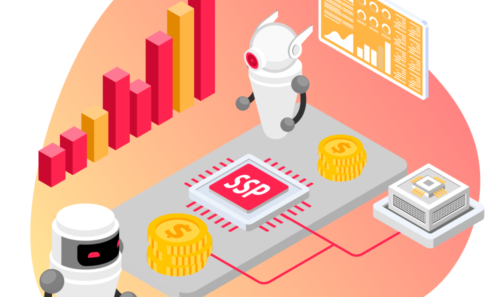How Artificial Intelligence Powers Digital Ad Sales
Artificial intelligence remains one of the most frequently mentioned concepts of the 21st century. Every company dealing in the technology business wants to be associated with algorithms that most people attribute to divine intervention. Aside from artificial intelligence, there is machine learning, which is also shrouded in a mystical aura. In this instance, it is one that predicts certain events or features. That these technologies are placed on high pedestals is hardly surprising. A machine can process volumes of information beyond the capacity of the human mind.
Hot topic alert! – Artificial intelligence and Machine Learning

Machine learning is based on an algorithm. It learns to predict a given set of attributes based on a given data set (training set). In the case of such a training set, this pertains to millions of rows in which the records constitute a single observation. Based on a set of attributes in a given observation, the algorithm learns that such a set implies either a specific behaviour, or indeed another feature.
Let’s take the Facebook algorithm. It is able to recognize which user of the website is in a given photo and propose to signpost the user in the photo. The database is all the photos of the Facebook user. Of course, optimized as a part of the Friends of the person adding the photo in order to avoid the problem of overloading and slowing down the algorithm. By the way, the same adjustments are used by neural networks.
Artificial intelligence and Online Advertising
From the perspective of a company like Yieldbird, we cannot imagine the internet advertising industry without artificial intelligence. Machine learning or algorithms; thanks to which, we are able to create the pricing policy of our Publishers. And at the same time we can look for completely new patterns in the data on the method of buying space.
First things first! Why does artificial intelligence play such a significant role?
1. Cookie = unlimited dataset
Looking at artificial intelligence from the level of online advertising, we encounter the so-called “sky’s the limit”. And so, a single cookie is identified with a person who is defined by a specific set of features that are provided to the algorithm arising from the cookie’s journey in the web. Thanks to this, information about the age and gender of a given user, place of residence or preferences is fed into the model. With this data resource, we can achieve a better targeting of the given impression in line with cookie preferences. All this aims to match the ad to the user in real time. Where human matching would take a great deal longer. Such actions are only possible with the help of machines and very fast (and therefore perfectly optimized) algorithms.
2. Programmatic managed by the machine

When we think about the software ecosystem, we don’t think about the specific buyer participating in the bidding. Behind such a buyer of a given Internet space, there is a bot. A machine that is able to bid like an experienced buyer, but which doesn’t need to carry out an extended decision-making process. It all takes a fraction of a second. In addition, the system sees auctions, and discerns at what rate they are won. It learns that it is able to purchase a given space after a given eCPM.
In the era of First Price, the buyer settles on a given rate and when parameters of the space change (e.g. its visibility index). It takes a few days for the machine to collect data and re-evaluate the rate. Therefore, we at Yieldbird often ascribe to inventory devaluation over the long term in the absence of flooring.
3. Optimization
Since we are already managing the pricing policy, it is worth mentioning (briefly) that without the use of artificial intelligence in the era of First Price, we would not be able to effectively manage the valuation of space. In the Second Price era, it was easier, because the auction itself took a different form. Thus, it was easier to find the optimal price for a given advertising unit. When we switched to First Price, our strategy had to change dramatically. We had to look at the auction both deeper; and more from above. This is where algorithms came in handy (or rather our Data Science team, which has developed our unique Price Selection algorithm). Thanks to this, the machine manages the selection of price rates, which are then verified by analysts (there is no 100% effective algorithm).
When we switched to First Price, our strategy had to change dramatically. We had to look at the auction both deeper; and more from above.
All this takes place in order not to lead to a situation where the value of the space is lost as a result of the setting of rates that are not based on the observation of buyer behaviour.
And this, it’s the result of the prediction of an overtrained algorithm making recourse to a huge set of data that shows the behaviour and attributes of the market at any given time.
And so what’s coming down the road?
Let’s face it, more and more of the elements of the ecosystem that govern online advertising are supported by the broadly understood notion of artificial intelligence. This is pushing the whole business forward; and is allowing us to better understand IA’s functioning and potential.
And so, in order to study market phenomena, simple statistical measures are not enough. We must look at correlations and relationships between metrics so that the valuation of the space is the result of a prediction, and not the evaluation of previous buyer actions.
At the same time, all the operations performed by machines have altered people’s activity priorities. As a result of IA and machine technology, we no longer have to deal with trivial, repetitive procedures; and we can focus on the kind of real intelligence that the machine itself does not possess.







